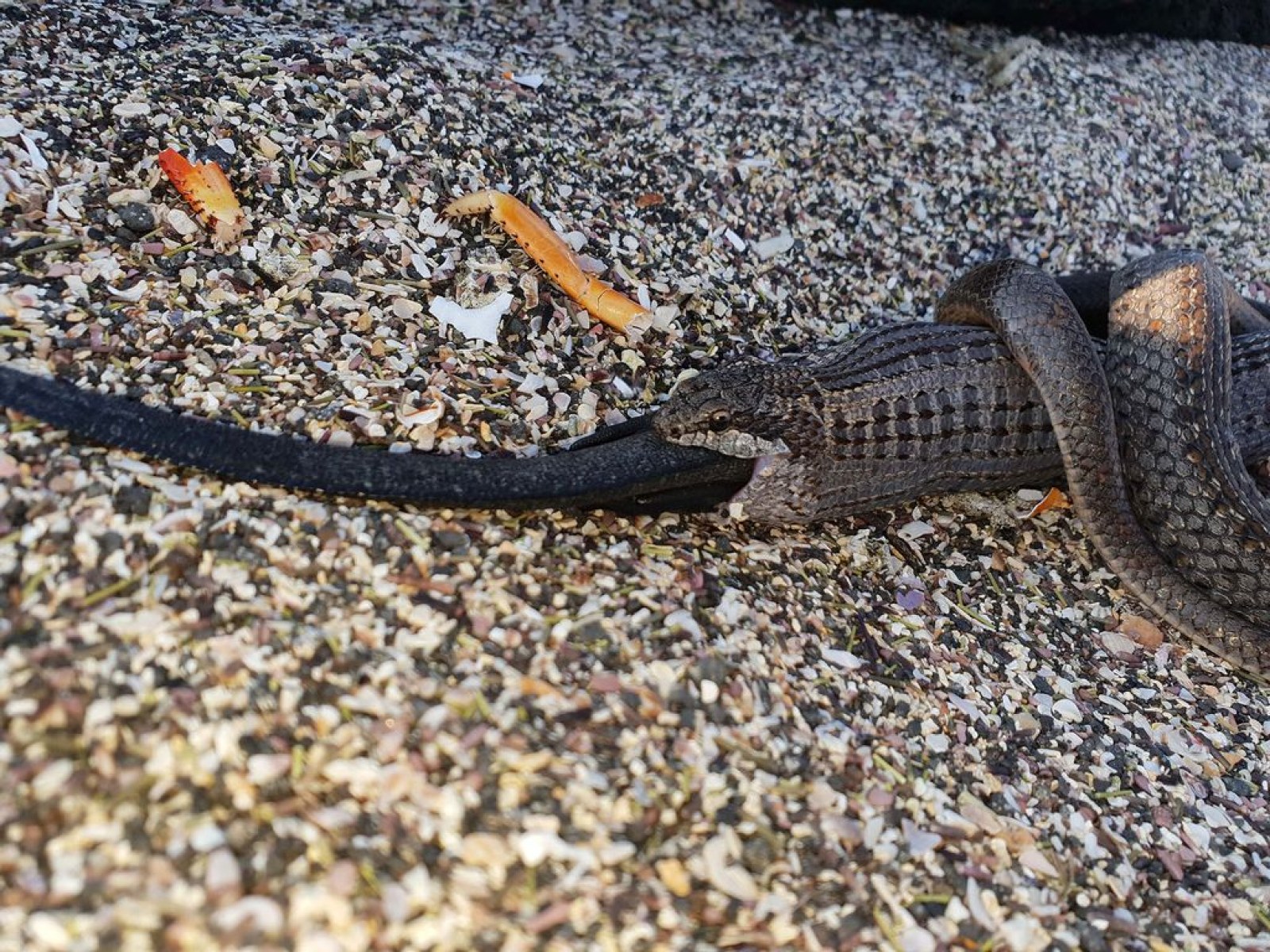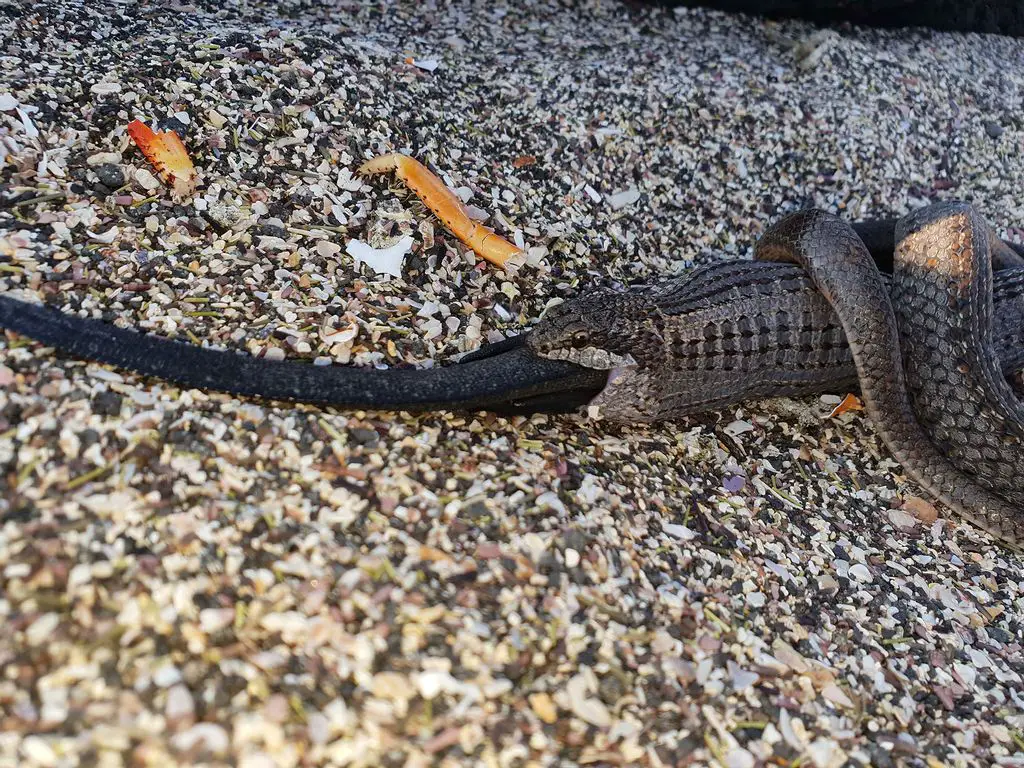Snakes are intriguing creatures that have captured the fascination of humans for centuries. With their unique physical characteristics and behavior, they have become subject to many myths and misconceptions. One of the most common questions people have about snakes is whether or not they eat each other.
The answer to this question is not as straightforward as one might think. While it is not uncommon for snakes to consume other snakes, it is not a behavior that is exhibited by all species. In this article, we will explore the fascinating world of snake cannibalism and take a closer look at the factors that influence this behavior.
Yes, snakes do eat each other. Cannibalism is not uncommon among snakes, especially when food is scarce or competition is high. Larger or dominant snakes may consume smaller or weaker snakes, and sometimes even their own offspring. However, this behavior is not healthy for snakes and can lead to a higher risk of disease and parasitic infections.

Do Snakes Eat Each Other?
Snakes are fascinating creatures that can be found in various parts of the world. They come in different sizes and colors, and they have unique characteristics that make them stand out from other animals. One question that often comes up when discussing snakes is whether or not they eat each other. This article will explore this topic in detail to provide you with a better understanding of the behavior of snakes.
Snakes and Cannibalism
Cannibalism is the practice of an animal feeding on another animal of the same species. It is a common behavior in some species, but is it something that snakes do? The answer is yes, some snakes do eat other snakes. However, this behavior is not very common and is more likely to occur in captivity than in the wild.
Snakes are carnivores, which means that they feed on other animals. They have a varied diet that includes rodents, birds, and other reptiles. In the wild, snakes are more likely to eat prey that is smaller than them. This is because larger prey can be more difficult to catch and swallow. However, when food is scarce, snakes may resort to eating other snakes.
There are some species of snakes that are more likely to eat other snakes than others. For example, king snakes and milk snakes are known to eat other snakes, including venomous ones. This behavior is thought to be a defense mechanism as these snakes are immune to the venom of the snakes they eat.
Why Do Snakes Eat Each Other?
Snakes may eat each other for a variety of reasons. One of the most common reasons is competition for resources. Snakes are solitary animals, and they may view other snakes as a threat to their territory. This can lead to aggressive behavior and even cannibalism.
Another reason why snakes may eat each other is because of hunger. When food is scarce, snakes may resort to eating other snakes to survive. This is more likely to occur in captivity than in the wild, as snakes in captivity may not have access to their natural prey.
Finally, some snakes may eat other snakes as part of their natural diet. As mentioned earlier, some species of snakes are more likely to eat other snakes than others. These snakes have adapted to eating other snakes and have developed unique characteristics that allow them to do so.
The Pros and Cons of Snakes Eating Each Other
While cannibalism in snakes may seem like a negative behavior, there are some benefits to it. For example, it can help to control the population of certain species of snakes. When food is scarce, snakes may resort to eating each other, which can help to reduce the number of snakes in an area.
However, there are also some downsides to snakes eating each other. For example, it can increase the risk of disease transmission. When snakes eat each other, they may be exposed to diseases that the other snake was carrying. This can lead to the spread of disease within the snake population.
Conclusion
In conclusion, snakes do eat each other, but this behavior is not very common. It is more likely to occur in captivity than in the wild, and some species of snakes are more likely to eat other snakes than others. While there are some benefits to snakes eating each other, such as population control, there are also some downsides, such as the risk of disease transmission. Overall, understanding the behavior of snakes can help us to better appreciate these fascinating creatures.
Frequently Asked Questions
Snakes are fascinating creatures that have captured the attention of humans for centuries. As one of the most diverse groups of reptiles, snakes come in a variety of shapes, sizes, and colors. With their unique physical characteristics and predatory nature, many people wonder if snakes eat each other. Here are some common questions and answers about this topic.
What Types of Snakes are Known to Eat Other Snakes?
Cannibalism, or the act of one animal eating another of the same species, is not uncommon in the animal kingdom, and snakes are no exception. Some species of snakes, such as king snakes and rat snakes, are known to eat other snakes. These snakes have specialized teeth designed to grip and swallow prey whole, including other snakes.
However, not all snakes are cannibalistic, and the majority of snake species do not eat other snakes as part of their diet. Most snakes prefer to eat rodents, birds, lizards, and other small animals.
Why Do Some Snakes Eat Other Snakes?
Snakes that eat other snakes do so for a variety of reasons. For some species, such as king snakes, eating other snakes is a natural part of their diet. These snakes are opportunistic predators that will eat anything they can catch, including other snakes.
Other species of snakes may turn to cannibalism when food is scarce or competition for resources is high. In these cases, snakes may resort to eating other snakes in order to survive.
Is Cannibalism Common Among Snakes?
Cannibalism is not common among all species of snakes. While some snakes are known to eat other snakes, the majority of snake species do not engage in this behavior. Cannibalism tends to be more common in species that are highly opportunistic and adaptable, such as king snakes and rat snakes.
However, even among these species, cannibalism is not the norm. Snakes generally prefer to eat a varied diet of small animals rather than resorting to cannibalism.
What Happens When a Snake Eats Another Snake?
When a snake eats another snake, the process is similar to when it eats any other prey. The snake will use its specialized teeth to grip the other snake and swallow it whole. The digestive process begins as soon as the snake has swallowed its prey, with enzymes breaking down the prey’s tissues and organs.
However, snakes that eat other snakes may be at risk of ingesting parasites or diseases that the other snake was carrying. In addition, the act of eating another snake can be dangerous, as the prey may be larger or stronger than the predator.
Do Pet Snakes Eat Each Other?
In general, pet snakes do not eat each other. Most pet snakes are kept alone in their enclosure, and are provided with a varied diet of small animals. However, it is possible for snakes to become aggressive towards each other if they are kept in the same enclosure.
Owners of pet snakes should be careful when introducing new snakes to an enclosure, as territorial disputes can sometimes occur. It is best to keep snakes in separate enclosures to prevent any potential aggression or cannibalism.
Hunger or Madness: Why Snakes Eat Themselves or Swallow Other Snakes?
In conclusion, the answer to the question “Do snakes eat each other?” is yes, some species of snakes do consume other snakes. However, this behavior is not common among all snake species and is often seen in cases of competition for food or territory.
Furthermore, cannibalism among snakes is not limited to adults. Juvenile snakes may also engage in this behavior, especially if food resources are scarce in their environment.
Overall, while the idea of snakes eating each other may seem gruesome to some, it is simply a natural behavior for certain species and serves as a means for survival in the wild.


